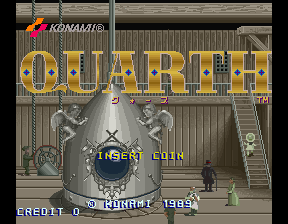EDITOR'S NOTE:
Quick thanks to Ultra Powerful Pal of Gaming Hell HokutoNoShock for being a good sport and playing a bit of co-op / versus in Fightcade.
Also, we'll mostly just be using the Japanese name because, well, it's Quarth. Block Hole is a good pun but it's a bit silly.
It is almost the nineties and there is time for... Quarth?
Well, there's always time for Quarth here on Gaming Hell, no matter the era.


















































